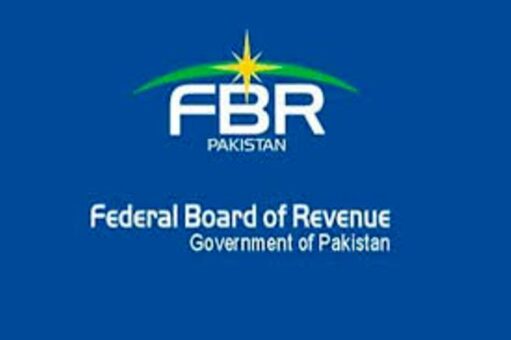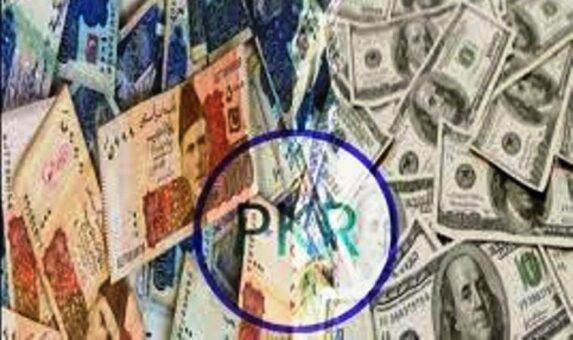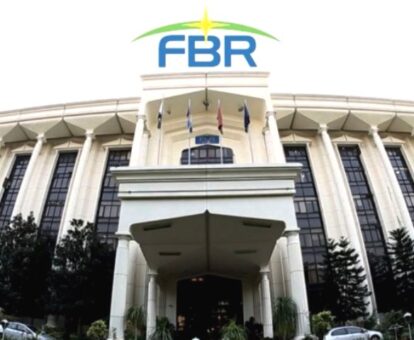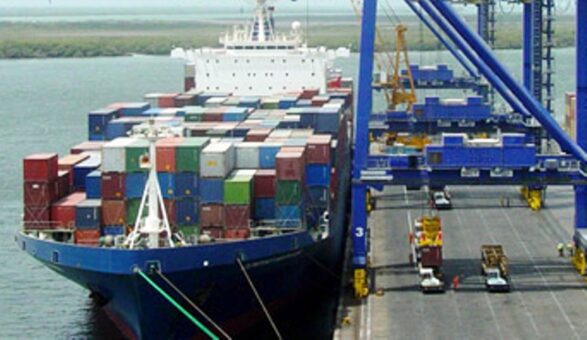SINGAPORE: Moody’s Investors Service on Thursday downgraded the government of Pakistan’s local and foreign currency issuer and senior unsecured debt ratings to Caa1 from B3.
The global rating agency also downgraded the rating for the senior unsecured MTN programme to (P) Caa1 from (P)B3. The outlook remains negative.
It said that the decision to downgrade the ratings to Caa1 is driven by increased government liquidity and external vulnerability risks and higher debt sustainability risks, in the aftermath of devastating floods that hit the country since June 2022.
“The floods have exacerbated Pakistan’s liquidity and external credit weaknesses and vastly increase social spending needs, while government revenue is severely hit,” the rating agency added.
Debt affordability, a long-standing credit weakness for Pakistan, will remain extremely weak for the foreseeable future.
The Caa1 rating reflects Moody’s view that Pakistan will remain highly reliant on financing from multilateral partners and other official sector creditors to meet its debt payments, in the absence of access to market financing at affordable costs.
In particular, Moody’s expects that Pakistan’s IMF Extended Fund Facility (EFF) program will remain in place and provide an avenue for financing from the IMF and other multilateral and bilateral partners in the near term.
The negative outlook captures risks around Pakistan’s ability to secure required financing to fully meet its needs in the next few years.
Elevated social and political risks compound the government’s difficulty in implementing reforms, including revenue-raising measures, that would improve the country’s fiscal position and alleviate liquidity stresses.
The floods will also raise Pakistan’s external financing needs, raising the risks of a balance of payments crisis.
Pakistan’s weak institutions and governance strength adds uncertainty around whether the country will maintain a credible policy path that supports further financing.
The negative outlook also captures risks that, should a debt restructuring be needed, it may extend to private sector creditors.
The Caa1 rating also applies to the backed foreign currency senior unsecured ratings for The Third Pakistan International Sukuk Co Ltd and The Pakistan Global Sukuk Programme Co Ltd. The associated payment obligations are, in Moody’s view, direct obligations of the Government of Pakistan.
Concurrent to today’s action, Moody’s has lowered Pakistan’s local and foreign currency country ceilings to B2 and Caa1 from B1 and B3, respectively. The two-notch gap between the local currency ceiling and sovereign rating is driven by the government’s relatively large footprint in the economy, weak institutions, and relatively high political and external vulnerability risk.
The two-notch gap between the foreign currency ceiling and the local currency ceiling reflects incomplete capital account convertibility and relatively weak policy effectiveness, which point to material transfer and convertibility risks notwithstanding moderate external debt.
Pakistan’s economic outlook in the near and medium term has deteriorated sharply as a result of the floods. The government’s preliminary estimates put the economic cost of the floods at about $30 billion (10 per cent of GDP), far above the estimated $10 billion economic cost of the 2010 floods, which was until now the country’s worst flooding episode.
Moody’s has lowered Pakistan’s real GDP growth to 0-1 per cent for fiscal 2023 (the year ending in June 2023), from a pre-flood estimate of 3-4 per cent. The floods will affect all sectors, with the impact likely more acute in the agriculture sector, which makes up about one-quarter of the economy.
As the economy recovers from the floods, Moody’s expects growth to pick up next year but stay below trend.
The supply shock due to the floods will increase prices further, at a time when inflationary pressures are already elevated. The monthly inflation rate averaged 25 per cent from July-September 2022.
Moody’s expects inflation to pick up to 25-30 per cent on average for fiscal 2023, compared to a pre-flood estimate of 20-25 per cent. Social risks may increase as households face higher costs of living for a more protracted period of time, which would have attendant negative economic and fiscal implications.
Moreover, the floods are likely to have long-term negative effects on economic and social conditions. There is already a significant increase in water-borne diseases, and education is again disrupted for many displaced children not long after schooling resumed following the pandemic.
The economy’s susceptibility to climate events is captured in Moody’s assessment of highly negative environmental risks, as explained below.
The growth shock will lower government revenues, while government expenditures will be raised by the costs of rescue and relief operations. Moody’s expects the fiscal deficit to widen to 7-8 per cent of GDP for fiscal 2023, from a pre-flood estimate of 5-6 per cent of GDP.
Pressures on public finances are likely to persist in the next few years, as expenditures remain high because of reconstruction and social needs.
Accordingly, Pakistan’s debt affordability – which is already one of the weakest among the sovereigns Moody’s rate – will worsen. Against a backdrop of increasing interest rates and weaker revenue collection, Moody’s estimates that interest payments will increase to around 50 per cent in fiscal 2023, from 40 per cent of government revenue in fiscal 2022, and stabilise at this level for the next few years.
A significant share of revenue going towards interest payments will increasingly constrain the government’s capacity to service its debt while also meeting the population’s essential social spending needs.
Meanwhile, because of the narrow revenue base, the government’s debt as a share of revenue is very high at about 600 per cent in fiscal 2022. Moody’s expects this ratio to rise further to 620-640 per cent in fiscal 2023, well above the median of 320 per cent for Caa-rated sovereigns, despite a more moderate debt to GDP ratio at 65-70 per cent in fiscal 2023.
Moody’s expects the current account deficit to widen to 3.5-4.5 per cent of GDP for fiscal 2023, compared to a pre-flood estimate of 3-3.5 per cent. While imports of a range of goods are likely to decline as demand shrinks, imports of food and other essential items such as medical supplies will increase, while export capacity will be hit.
That said, Moody’s expects the larger trade deficit to be partially offset by an increase in remittances which tend to increase at times of crises.
While the current account deficit widens, Pakistan’s foreign exchange reserves have remained at very low levels, sufficient to cover less than two months of imports even after the recent IMF disbursement of $1.1 billion from the seventh and eighth review of the EFF programme.
This low level of reserves limits Pakistan’s ability to substantially draw down on them to meet debt or imports payments needs, without risking a balance of payments crisis.
External liquidity conditions have also tightened significantly for Pakistan. Its access to market financing at affordable cost is extremely constrained, and will likely remain so for some time.
Therefore, Pakistan will remain highly reliant on financing from multilateral and bilateral partners. Moody’s expects Pakistan’s continued engagement with the IMF to enable it to access financing from the IMF and related financing from other multilateral partners and official creditors.
Moody’s understands that the government has secured additional commitments from multilateral partners to meet higher financing needs due to the floods. Nonetheless, risks remain in particular related to Pakistan’s weak institutions and governance strength which adds uncertainty about the sovereign’s capacity to maintain a credible and effective policy stance.
The negative outlook captures the downside risks beyond what would be consistent with a Caa1 rating.
Elevated social and political risks compound the government’s difficulty in implementing reforms, including revenue-raising measures, that would improve the country’s fiscal position and alleviate liquidity stresses. Moreover, as mentioned above, Pakistan faces risks of a balance of payments crisis, which would increase if its external payments needs are higher than currently expected, for instance because of larger imports needs, while access to external financing is more restricted.
Moreover, while Moody’s assumes that access to official sector financing will be maintained and will be enough to meet Pakistan’s needs, lower financing and/ or higher needs would raise the risk of default to a level no longer consistent with a Caa1 rating.
On 25 September, the then Finance Minister indicated that Pakistan would seek debt relief from official creditors, on a bilateral basis. The negative outlook also captures risks that, should a debt restructuring be sought, it may extend to private sector creditors, despite assurances by the government late September that it is not seeking debt relief from commercial banks or Eurobond holders. In this case, it would likely constitute a default under Moody’s definition.






